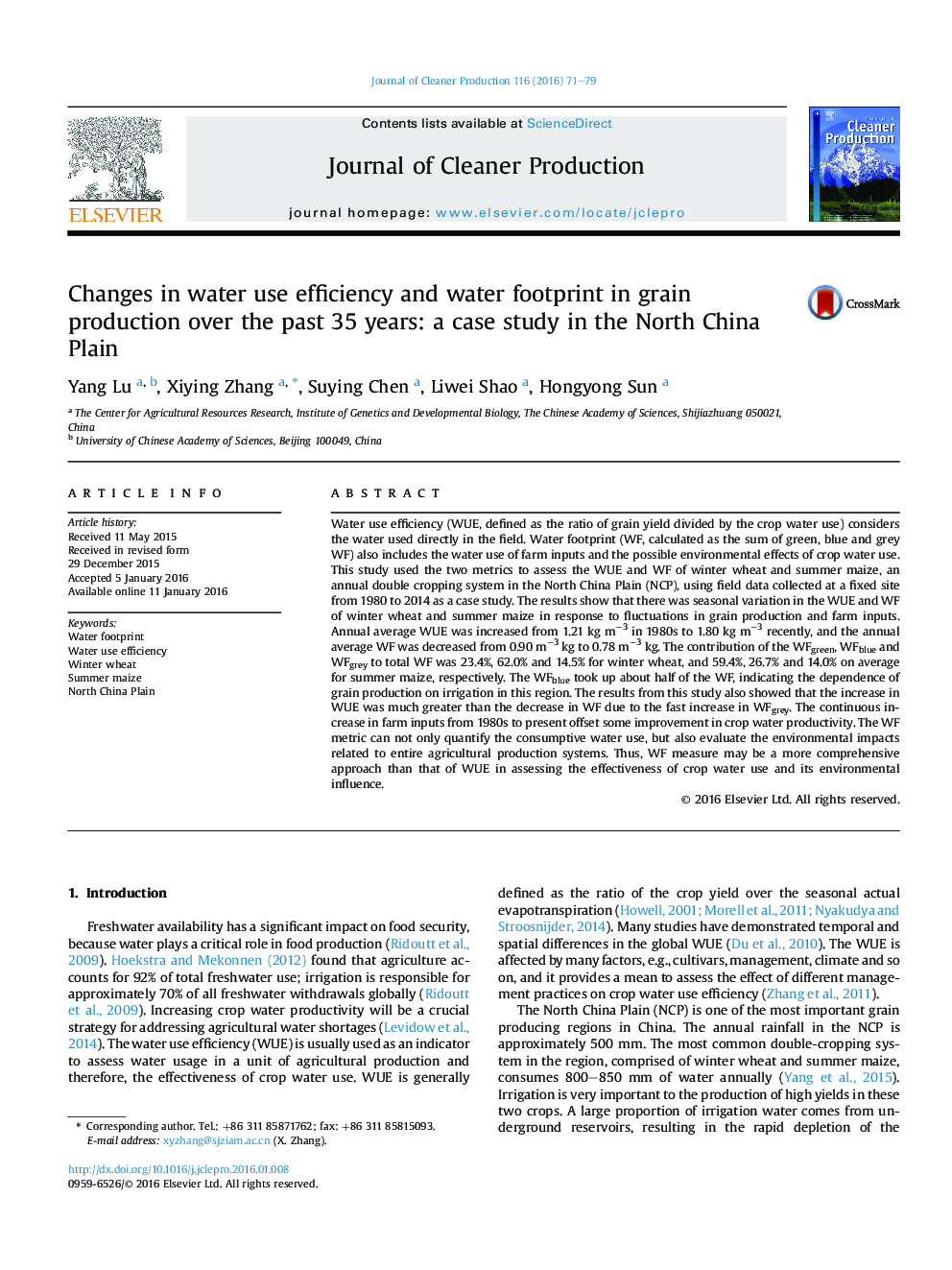| Article ID | Journal | Published Year | Pages | File Type |
|---|---|---|---|---|
| 1744185 | Journal of Cleaner Production | 2016 | 9 Pages |
Abstract
Water use efficiency (WUE, defined as the ratio of grain yield divided by the crop water use) considers the water used directly in the field. Water footprint (WF, calculated as the sum of green, blue and grey WF) also includes the water use of farm inputs and the possible environmental effects of crop water use. This study used the two metrics to assess the WUE and WF of winter wheat and summer maize, an annual double cropping system in the North China Plain (NCP), using field data collected at a fixed site from 1980 to 2014 as a case study. The results show that there was seasonal variation in the WUE and WF of winter wheat and summer maize in response to fluctuations in grain production and farm inputs. Annual average WUE was increased from 1.21 kg mâ3 in 1980s to 1.80 kg mâ3 recently, and the annual average WF was decreased from 0.90 mâ3 kg to 0.78 mâ3 kg. The contribution of the WFgreen, WFblue and WFgrey to total WF was 23.4%, 62.0% and 14.5% for winter wheat, and 59.4%, 26.7% and 14.0% on average for summer maize, respectively. The WFblue took up about half of the WF, indicating the dependence of grain production on irrigation in this region. The results from this study also showed that the increase in WUE was much greater than the decrease in WF due to the fast increase in WFgrey. The continuous increase in farm inputs from 1980s to present offset some improvement in crop water productivity. The WF metric can not only quantify the consumptive water use, but also evaluate the environmental impacts related to entire agricultural production systems. Thus, WF measure may be a more comprehensive approach than that of WUE in assessing the effectiveness of crop water use and its environmental influence.
Related Topics
Physical Sciences and Engineering
Energy
Renewable Energy, Sustainability and the Environment
Authors
Yang Lu, Xiying Zhang, Suying Chen, Liwei Shao, Hongyong Sun,
